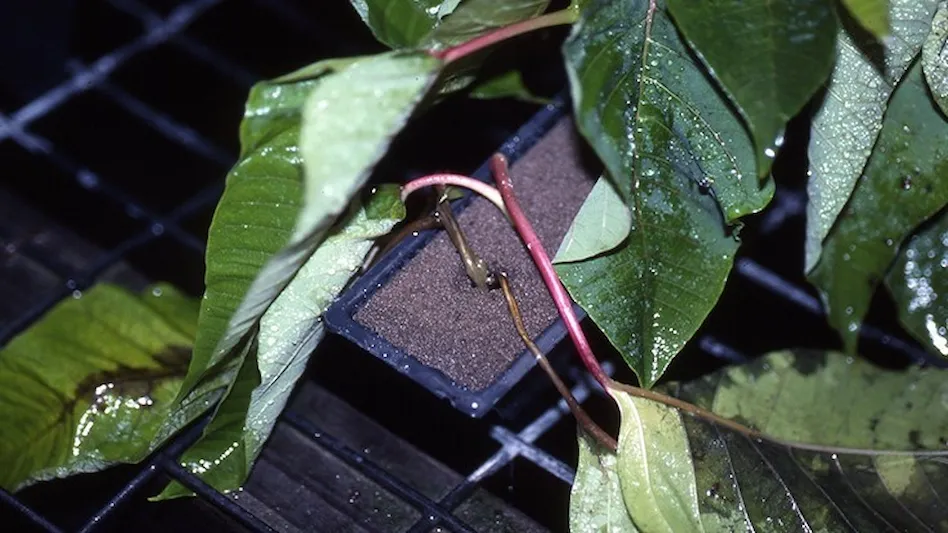
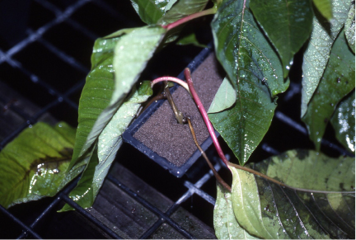
On its roughly 115 production acres between its Newport, Minnesota, headquarters and second locations in Yamhill, Oregon, and Onarga, Illinois, Bailey Nurseries fights foliar bacterial diseases such as bacterial leaf spot on Hydrangea arborescens and Pseudomonas on Syringa vulgaris, says Zach Brown, Bailey Nurseries’ plant health department head.
One of the most reliable tools in Bailey Nurseries’ arsenal is Camelot O, a fungicide-bactericide from SePRO. The grower it uses on crops at all three locations, says Brown, who oversees watering, weeding, fertility and spray lists at Bailey Nurseries, from both a preventative and reactive standpoint.
A clear benefit of Camelot O, Brown says, is its short, four-hour re-entry interval (REI). If nursery workers were to spray other copper-based fungicides at 6 or 7 p.m. on a given day, the restriction to re-entry would prevent them from completing work the following day.
Brown sprays Camelot O on the bacterial diseases of Pseudomonas and bacterial leaf spot, as well as the fungal diseases of powdery mildew and rust. “The Pseudomonas really works its way through the entire plant, whereas the bacterial leaf spot that we’re going after is really just a foliar issue,” he says. “[But] we treat them the same, and using the Camelot O, it acts as a blanket treatment for the bacteria and other fungal pathogens.”
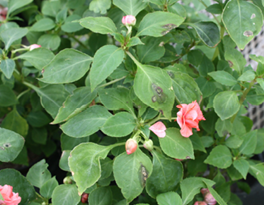
What are foliar bacterial diseases?
Foliar bacterial diseases are usually leaf spots or blights, the latter of which are leaf spots that merge into a sizable area, says Dr. A.R. Chase, president of Chase Agricultural Consulting. “Unfortunately, most bacterial leaf spots are harder to control than fungal leaf spots in my experiences,” she says.
Warmth — although not necessarily heat — as well as excessive water, promote bacterial leaf spots, Chase says. Pseudomonas (also known as Acidovorax), Xanthomonas and Erwinia (also known as Pectobacterium and Dickeya), most commonly cause bacterial leaf spots, she says. Spring often brings about conditions that favor Pseudomonas, while summer more often spurs Erwinia and Xanthomonas development.
“Almost all bacterial leaf spots would disappear if growers could stop getting the plant leaves wet,” Chase says. “This is not possible for many growers, so prevention of the most common problems is a good idea — that is to say, prevention on the plants that you grow that you know get bacterial leaf spots.”
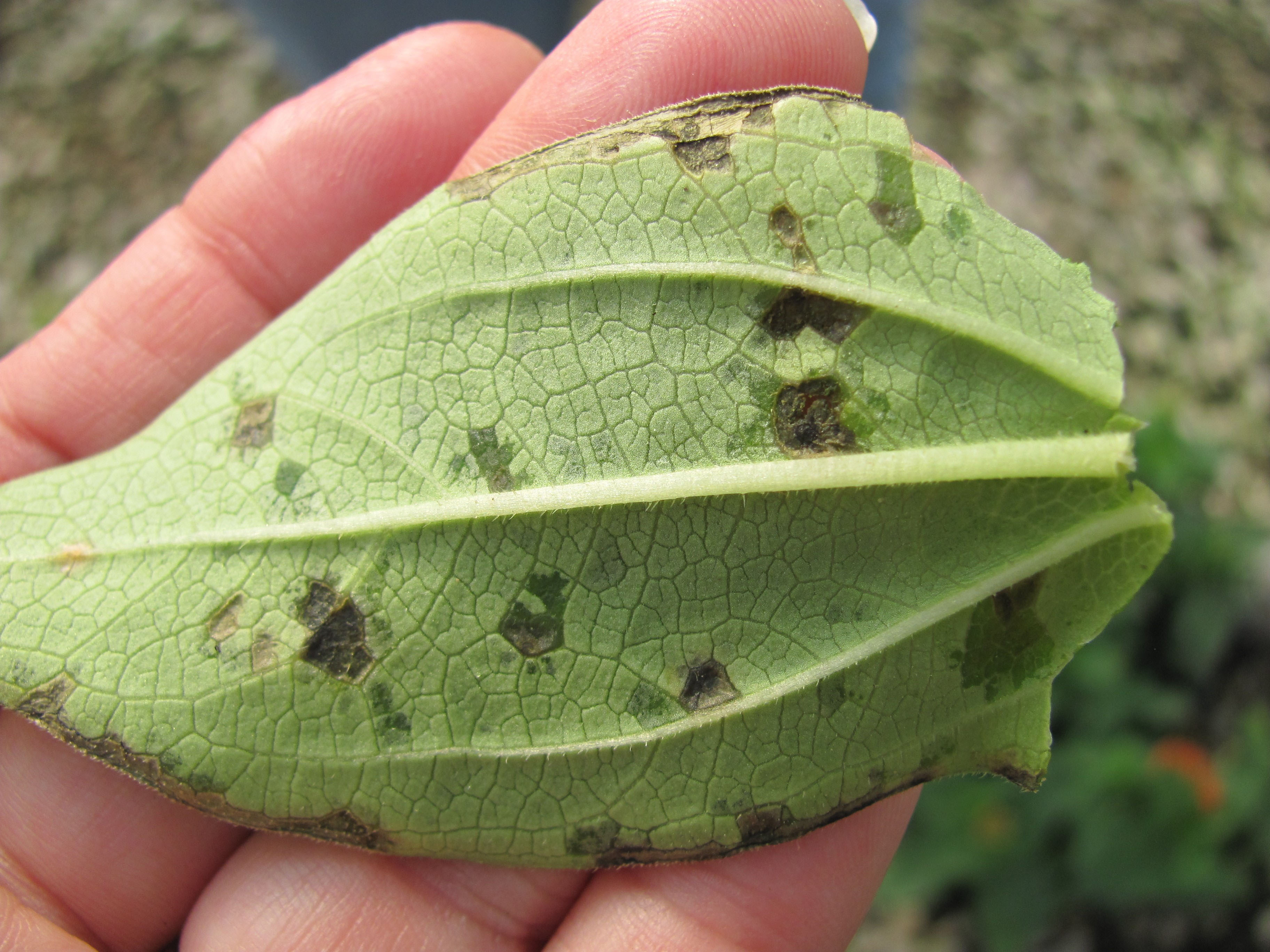
Many plants are attacked by bacteria that cause leaf spots, Chase says. Every plant suffers from at least one pathogen. Foliage plants can often get Erwinia, Pseudomonas or Xanthomonas. Gerbera daisies, chrysanthemums, basil, rosemary and lavender all get Pseudomonas; poinsettia cuttings get Erwinia; and poinsettias growing late in production, zinnia, rosemary, lavender and oakleaf hydrangeas get Xanthomonas.
Chase calls copper products such as Camelot O and Junction (another fungicide-bactericide from SePRO) the “cornerstone of bacterial leaf spot prevention.” Other effective products include certain antiobiotics, biopesticides, microbial fungicides and quaternary ammonium products.
“Bacteria become resistant to a product very fast,” Chase says. This is why, she says, growers should rotate products, such as a copper and a biopesticide, or a copper and quaternary ammonium.
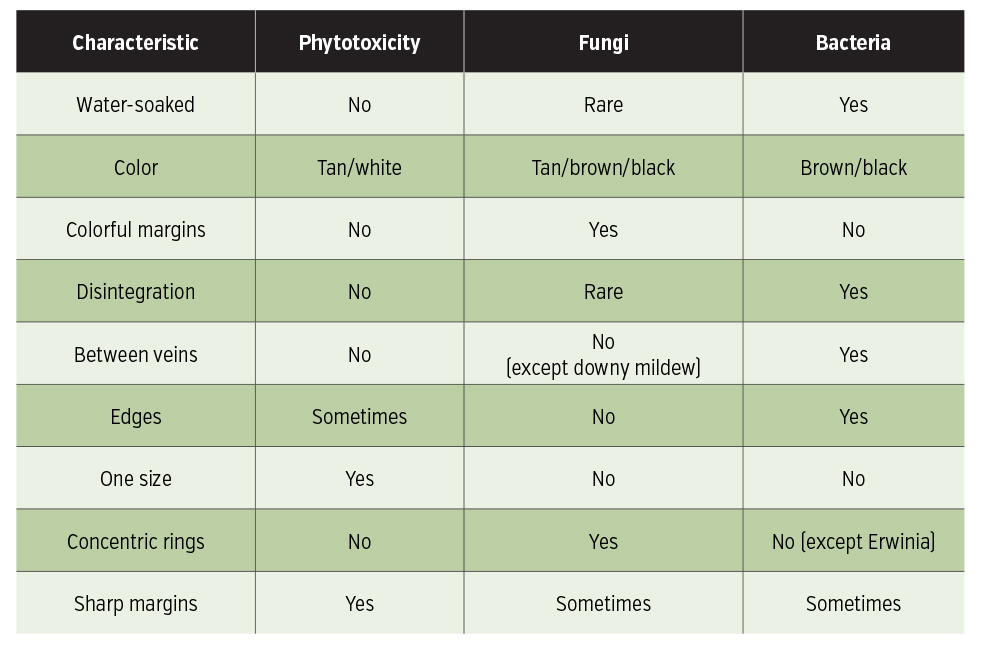
Watching the rain
Too much water can be an issue at Bailey Nurseries, occasionally allowing bacterial diseases to develop. The nursery uses overhead irrigation, and at its headquarters, rains are heavy. Because of this, it has been important for the nursery to spray before and after rain events.
Bailey Nurseries rotates between Camelot O and bacillus products, which Brown says are “bacterial cultures that provide a barrier to keep the bad bacteria from getting into the plant tissues.”
“We have to spray early and often and then cut back on how often we water, if possible, and also reduce the amount that we water,” Brown says. “We have tried to do that as well so that we’re not waterlogging the ground around [the plants].”As the nursery replants, inventory will update its lists, and the workers see everything on the farm that needs sprayed. “There have been times where we’ve sprayed lines next to other lines that maybe got missed,” Brown says. “[With] the side-by-side inadvertent trial, you can see the difference — treated versus untreated. You can definitely tell when something has been treated and not. It makes a big difference.”— Patrick Williams
*Always read and follow label directions. Camelot and Junction are registered trademarks of SePRO Corporation.

Explore the March 2018 Issue
Check out more from this issue and find you next story to read.
Latest from Greenhouse Management
- CIOPORA appoints Micaela Filippo as vice secretary-general
- Passion grows progress
- Registration opens for Darwin Perennials Day
- U.S. Department of Labor finalizes farmworker protection rule
- Azo Root is now available from Harrell’s
- Bidens ferulifolia Blazing Glory
- Rob Hanifin joins Ridder North America as product specialist for climate screens
- The importance of measuring light





